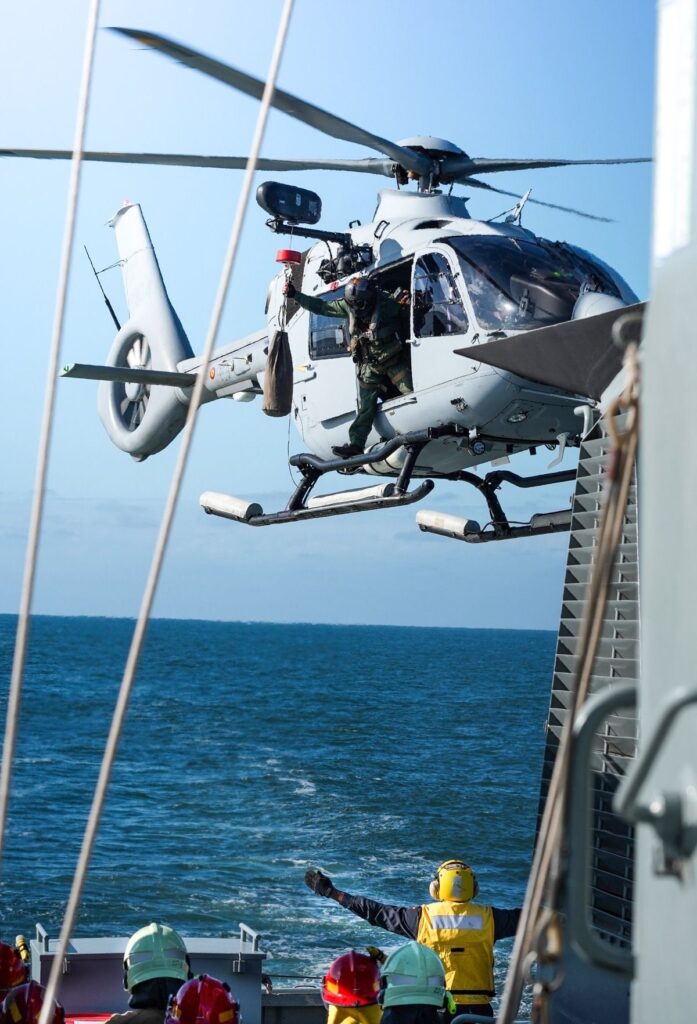The image captures a Vertical Replenishment (VERTREP) or hoist operation being conducted by a military helicopter from a ship at sea, a critical maneuver that showcases both precision and teamwork in naval logistics. VERTREP operations are essential to sustaining naval vessels deployed far from port, ensuring that they remain supplied with fuel, ammunition, food, and other essential materials needed for continuous operations. This image reflects the intricate coordination between air and sea assets that allows fleets to maintain readiness and extend their time on station without returning to shore.
In the photo, a helicopter hovers steadily above the deck of a supply or combat ship, its rotors generating a powerful downwash that ripples across the ocean surface. Suspended beneath the aircraft is a cargo load—typically packaged in netting or secured by slings—being either lowered to the receiving ship or lifted from it. Each motion must be exact, as even small errors in timing or communication can pose risks to both the crew and equipment. The deck crew, wearing color-coded uniforms and helmets, signal to the helicopter crew using hand gestures or radio communication, ensuring that the load is transferred safely despite the constant movement of the sea.
The operation demonstrates how modern naval forces rely on flexibility and efficiency. Unlike traditional resupply methods that require ships to come alongside one another—a process known as Connected Replenishment (CONREP)—VERTREP allows for greater maneuverability and safety, especially in rough seas or combat zones. By using helicopters, naval task groups can conduct resupply operations with multiple ships simultaneously, spreading supplies quickly and reducing exposure time in potentially hostile environments. This mobility is particularly valuable during humanitarian missions or extended deployments where access to port facilities may be limited.
VERTREP missions also highlight the advanced capabilities of military helicopters and the skill of their pilots. Flying a hover over an unstable, moving deck in high winds demands intense concentration and training. The helicopter’s crew must constantly adjust to maintain stability while compensating for the ship’s pitch and roll. At the same time, the deck crew works in tight synchronization, attaching and detaching loads swiftly under challenging conditions. The teamwork on display reflects not only discipline but also trust—every person involved relies on the others to perform flawlessly.
Beyond logistics, the image captures a deeper message about the adaptability of naval operations and the professionalism of those who serve at sea. It is a snapshot of modern maritime strength—technology and human capability working together in harmony. Each successful VERTREP ensures that ships remain operational, missions stay on track, and personnel receive the support they need, no matter how far from home they are.
Ultimately, this image stands as a powerful reminder of the unseen work that sustains naval power. The calm coordination amid the chaos of wind and waves represents the quiet efficiency that defines naval operations. It is not a moment of combat, but one of endurance, preparation, and teamwork—the kind of discipline that keeps fleets ready for whatever lies beyond the horizon.



